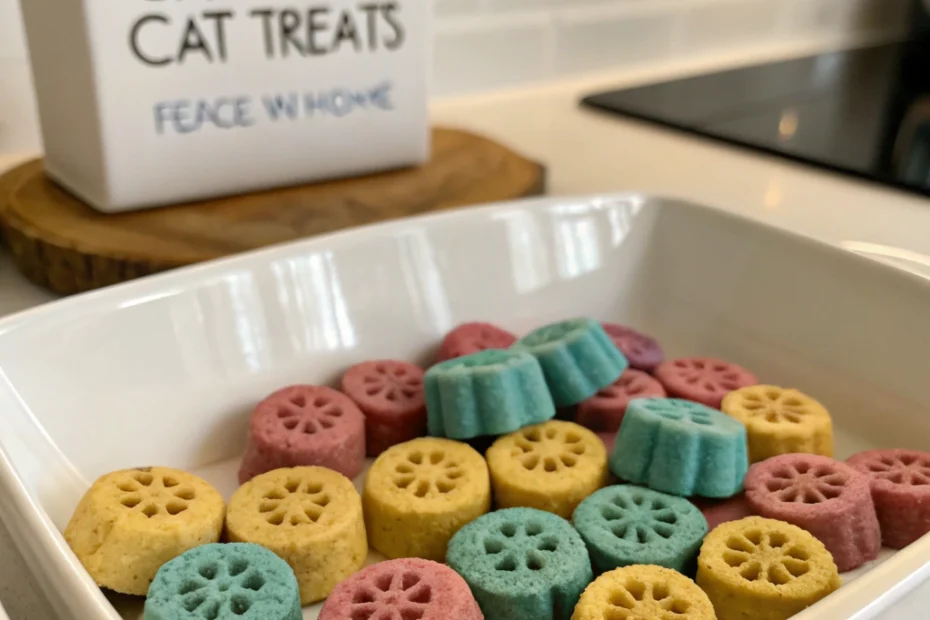At-a-Glance
Calming cat treats are a popular choice among pet owners looking to help their feline friends manage stress and anxiety. These treats may help create a more relaxed environment for your cat, especially during stressful situations like travel, vet visits, or changes in their routine. While they are not a cure-all, calming treats can be a useful part of a broader strategy to support your cat’s emotional well-being.
These treats often contain ingredients that are commonly used to promote relaxation in cats. They can be a convenient option for pet owners who want to provide their cats with a little extra support without the need for prescription medications. However, it’s important to remember that every cat is unique, and what works for one may not work for another.
How to Choose
When selecting calming cat treats, consider the specific needs of your cat. Look for products that list their active ingredients clearly. Common ingredients found in these treats include L-theanine, chamomile, valerian root, and tryptophan. These ingredients are known for their potential calming effects and are often used in various pet calming products.
It’s also important to consider the form and flavor of the treats. Some cats may prefer soft chews, while others might like crunchy options. Flavor can also play a significant role in whether your cat will accept the treat. Chicken, fish, and cheese are popular flavors that many cats enjoy.
Additionally, check for any certifications or endorsements from veterinary professionals. Products that have been tested and recommended by veterinarians can provide an extra layer of assurance regarding their safety and efficacy.
Safety & Setup
Before introducing calming cat treats into your pet’s routine, it’s crucial to consider safety. Always follow the manufacturer’s guidelines regarding dosage and frequency. Overuse of any supplement can lead to adverse effects, so moderation is key.
Observe your cat’s behavior after introducing the treats. If you notice any unusual reactions, such as digestive upset or changes in behavior, discontinue use and consult your veterinarian. It’s also wise to introduce any new product gradually, allowing your cat to adjust to the new addition to their diet.
Ensure that the treats are stored properly, in a cool, dry place, to maintain their effectiveness. Keep them out of reach of your cat to prevent accidental overconsumption.
Core Pillars
The effectiveness of calming cat treats can be enhanced when combined with other strategies. Consider the following core pillars to support your cat’s emotional health:
- Environment: Create a calm and safe space for your cat. This can include quiet areas where they can retreat and relax.
- Routine: Maintain a consistent daily routine to provide your cat with a sense of stability and predictability.
- Enrichment: Provide toys and activities that stimulate your cat’s mind and body, helping to reduce stress and boredom.
- Interaction: Spend quality time with your cat, offering affection and playtime to strengthen your bond.
Placement & Environment Tips
Where you place your cat’s calming treats can influence their effectiveness. Consider offering the treats in a quiet, familiar area where your cat feels safe. This can help reinforce the calming effects by associating the treats with a positive environment.
Additionally, be mindful of the timing. Offering calming treats before a known stressor, such as a car ride or a visit from guests, can help prepare your cat for the upcoming event. Consistency is key, so try to administer the treats at the same time each day if possible.
Comparison with Alternatives
Calming cat treats are just one of many options available to help manage feline anxiety. Other alternatives include pheromone diffusers, calming collars, and behavioral training. Each option has its own set of benefits and considerations.
Pheromone diffusers release synthetic versions of the calming pheromones cats naturally produce, which can help create a soothing environment. Calming collars work similarly by releasing pheromones close to the cat’s body. Behavioral training involves teaching your cat to cope with stressors through positive reinforcement techniques.
While calming treats offer convenience and ease of use, they may not be suitable for all cats. It’s important to evaluate your cat’s specific needs and preferences when choosing the best approach.
FAQs
Are calming cat treats safe for all cats?
Calming cat treats are generally safe for most cats, but it’s always best to consult with your veterinarian before introducing any new supplement, especially if your cat has underlying health conditions or is on medication.
How long do calming cat treats take to work?
The time it takes for calming cat treats to take effect can vary. Some cats may show signs of relaxation within 30 minutes, while others may take longer. Consistent use as directed can help achieve the best results.
Can I give my cat calming treats every day?
While many calming treats are designed for daily use, it’s important to follow the manufacturer’s guidelines and consult your veterinarian to ensure it’s appropriate for your cat’s specific needs.
What to Do Next
If you’re considering calming cat treats for your feline friend, start by discussing your options with your veterinarian. They can provide guidance on the best products and practices for your cat’s individual needs. Remember, calming treats are just one tool in a comprehensive approach to managing your cat’s anxiety. By combining them with other supportive strategies, you can help your cat lead a more relaxed and happy life.
Disclaimer: Always consult your veterinarian for personalized advice regarding your cat’s health.
